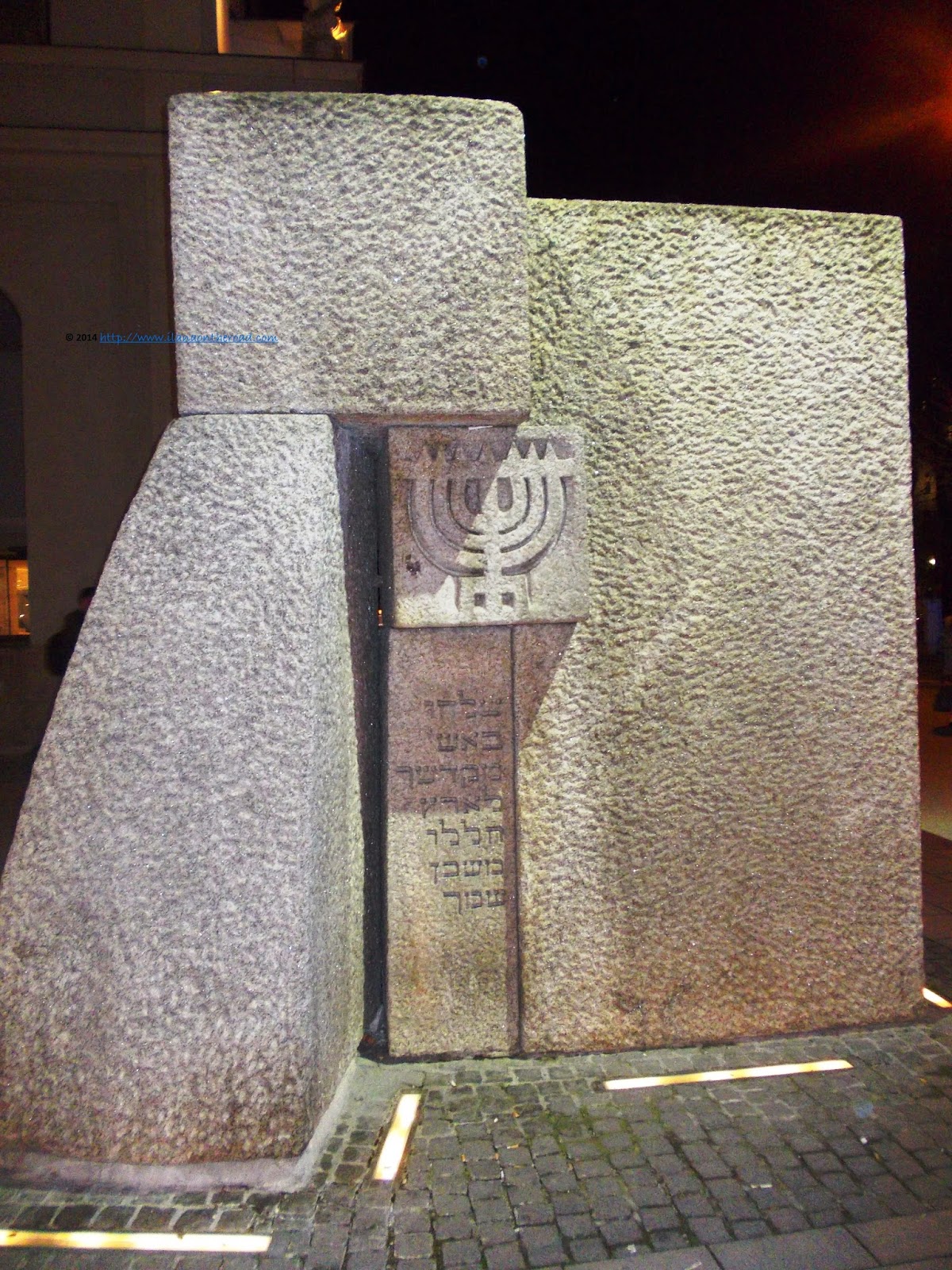Early spring in Leipzig. On the way to the Book Fair, I spotted a Magen David and the shadows of some tombstones and decided that I am rather late to the fair than missing the opportunity of having a look at a slice of Jewish history. I go out of the tram and go back for another 5 minutes till the entrance from Delitzcher strasse.
I first look through a big hole on the walls, through which one can enter the cemetery avoiding the main entrance that is open only between certain hours. Desecration of Jewish cemeteries happened in Leipzig too, but apparently for the moment, there are no specific threats. The entrance is not guarded and everything looked safe.
Out of the hole, a peaceful area, with a lot of green and trees, as in all the Jewish cemeteries.
At the entrance, a quote in German: 'Only love is stronger than death', a shortened adaptation of a verse from Shir Hashirim.
Most tombstones are well preserved, erected at the beginning of the 1930s, and after the war.
Old white stones with black spots of the new ones. The old area is almost empty. When I entered, I say 'Shalom' to two ladies exiting, that were looking a bit surprised at me. Jewish life is recorded in Leipzig since the 12th century, many Jews travelling regularly to town because of the fair trade. Officially, Jews were allowed to settle only in 1847. The first cemetery was created in 1815, till then the local Jews being buried in other places around, including Dresden.

In 1935, there were 11, 564 Jews living in Leipzig, the city being the sixth largest community in Germany. In 1942, the deportation began, and in 1945, there were only 15 Jews left. 200 returned from Theresienstadt and other concentration camps. Eugen Gollomb was the most important post-war leader of the community, between 1967-1988. Born in Breslau and with studies at the Rabbinical seminary in Lublin, he served in the Polish army, and was prisoner in several camps, including Auschwitz Birkenau. He also was in touch with the Polish resistance. After the war, he moved to Germany, but kept considering himself more Polish than German. He never was member of the communist party, and was labelled in the documents of the intelligence service STASI as a 'dangerous Zionist'.

Torah scrolls who are damaged are no more kosher hence cannot be used any more for ritual purposes. According to the Jewish tradition, the writings cannot be destroyed or discarded, but buried according to a specific ceremonial in the genizah - a word that means hide/put away - a special repository or place either in the attic or basement of the synagogue or in the cemetery. At the Leipzig cemetery, were buried Torah scrolls stolen from Poland during the war and recovered later in the century.
The number of Jews living in Leipzig increased especially after the end of the Cold War, when many Russians from the former Soviet Union arrived. Nowadays, there is a Jewish center and a limited kosher supervision, and since 2006, a mikvah/ritual bath, a clear message that in town are living observant families.
As always when I go in a Jewish cemeteries, I respectfully walk near the stones. The Jewish practice does not encourage excessive visits to the cemeteries. G-d is one and we don't need intermediaries for sending our wishes and prayers. The general etiquette when visiting a Jewish cemetery is to be respectful, refrain from shouting, walking or consuming beverages or foods.
The Jews in Leipzig were usually middle class business persons, busy with trade, hence a slight investment in the outlook of the graves. Rich and poor should be buried alike though, according to the Jewish tradition, and the visual barriers between the social classes don't find their place in the cemetery.
However, on the influence of the reform and Haskala, many Jewish cemeteries, especially in Germany - and Western part of Poland were adorned with artistic models and art nouveau decorations.
An interesting phenomenon that I noticed in Leipzig was the apparition, in the new section of the cemetery, of an area of tombs with many flowers. When I visited, during a day of full spring, a couple of women speaking Russian were there, cleaning the tombs and planting new flowers.
The planting of flowers on Jewish graves, and any adornments in general, are not part of the Jewish practice. As the flowers, the body is ephemeral and what is left is the soul, often symbolized by the small stones that we place near the burial sites in remembrance.
Asked about the practice of bringing Jewish flowers to the grave, Rabbi Chai Elazar Shapiro of Munkacs (1871-1937) was categorically against it. Mentioning the need to avoid making any differentiation between poor and rich Jews, he also outlined that it is generally forbidden to have benefit from anything associated with the grave, thus the smell and beauty of the flowers should be avoided. The memory of the deceased is usually remembered by good deeds, tzedaka (charity), sponsoring a communal meal or learning in the memory of the dead. Excessive grave visitation can be also associated with idolatry, one of the reasons statues are not allowed for adorning the cemeteries.

In the Jewish practice, the excessive visits to the cemeteries are not encouraged. The visits are recommended on decisive moments - at the end of the shiva time, on yohrzeit. Also many go on the fast days and the first days of the months of Nissan and Elul, but not on happy occasions such as Purim, or chol hamoed of Pesach and Sukkot.
On visitation, many recite the psalm 119.
I left the Leipzig cemetery, interested to return one day and meet some of the Jews living here. The past and future should be always connected by the present.
























